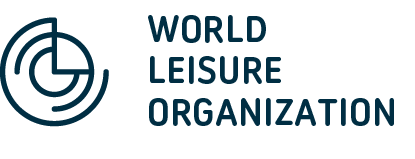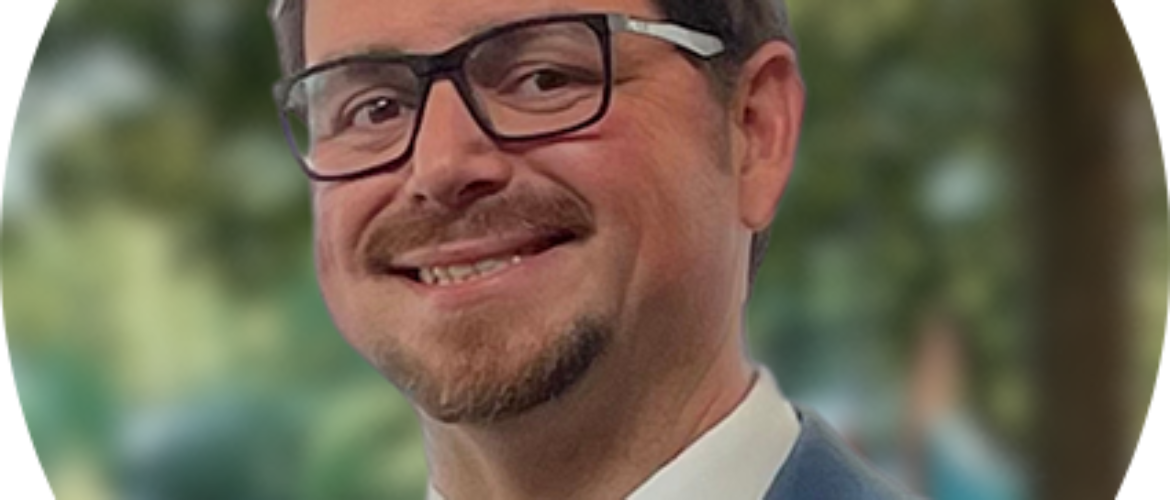In this wide-ranging interview led by Anthony Iracki, an experienced strategist and advocate for inclusive design in public spaces, we explore the evolving role of equity, accessibility, and innovation in parks and recreation. With a background spanning local government, nonprofit leadership, and strategic planning, Anthony brings a unique perspective shaped by both policy and practice.
From redefining accessibility to addressing environmental and public health challenges, the interview offers practical lessons and forward-looking perspectives for communities aiming to create more inclusive, sustainable, and socially vibrant public spaces.
How do you define equity in the context of parks and leisure, and can you share an example of a parks and recreation project where accessibility and inclusive design made a real impact on enhancing community participation?
To me, equity in parks and leisure means more than just meeting minimum standards—it’s about designing spaces and systems that welcome everyone, reflect the diversity of the community, and intentionally remove barriers to participation. True equity shows up in how decisions are made, who’s at the table, and how we ensure that people of all abilities, ages, and backgrounds feel a genuine sense of belonging.
One of the most powerful examples I’ve been part of is the redevelopment of Moss Universal Park in Wauwatosa, Wisconsin—an ambitious transformation of an 18-acre site led by The Ability Center in partnership with Milwaukee County Parks. While the project is still under construction, it’s already reshaping what inclusion looks like through the planning process itself.
Damian Buchman, founder of The Ability Center, has played a central role, working alongside our teams at GameTime and Impact Parks, and more importantly, side-by-side with local residents, partners, and stakeholders. Together, we’ve facilitated on-site walks, hosted community design sessions, and built cross-sector partnerships to ensure the park is truly shaped by a wide spectrum of voices, especially those often left out of traditional planning processes.
When complete, Moss Universal Park will feature an inclusive playground, sensory-friendly spaces, adaptive sports fields, outdoor fitness zones, and a fully accessible trail network. Every element is designed not only for access, but for agency—for people of all abilities to actively participate and belong.
And yet, the impact is already visible. Just through the design process, the project has sparked new conversations around equity, brought new partners to the table, and created a shared vision that extends far beyond the park boundary. It’s a reminder that equity isn’t just about what we build—it’s about how we build it, who we include, and the values we uphold along the way.
For more information visit https://universalpark.org/
As Vice Chair of the Grandville Parks and Recreation Board, what are the key issues or priorities you’re currently working on at the local level, and what lessons from your time on the board could help other communities strengthen their public recreation systems?
Grandville, MI is a small but vibrant inner-ring suburb of Grand Rapids with just over 16,000 residents in 7.5 square miles. Despite our size, we draw a lot of people from surrounding areas—not just for our parks, but also for shopping, entertainment, and dining. That means when we talk about the role of parks and recreation in our community, we have to think beyond just city residents. Our amenities serve a regional audience, and that changes how we approach planning and impact.
One of our priorities as a board has been grounding decisions in local data. When you look at a 3-mile radius around Wedgwood Park—our central park—you start to see broader trends: rates of adult poor mental health are 4% above the national average, youth disability is up 4%, and obesity is about 2% higher than the national benchmark. Local poverty rates are also about 5% higher than the state average. These metrics help us prioritize investments where they’re needed most.
That said, we also have strengths to build on. Grandville ranks 2.7% above the national average for walkability, and many of our residents live within a 10-minute walk of a park—an ideal benchmark according to the National Recreation and Park Association (NRPA). That’s something we take pride in and are always working to improve.
One of our standout projects was the development of a National Demonstration Site Playground at Wedgwood Park. This wasn’t just a typical playground—it was built using research-backed design that supports youth activity, inclusive play, and intergenerational use. We focused on six key elements: balancing, sliding, brachiating (overhead arm-over-arm movement), spinning, climbing, and swinging. Combine that with accessible surfacing, transfer points, and multi-user swings, and it becomes a space where families of all ages and abilities can come together and engage in meaningful play and directly address the issues outlined in the data above.
But our focus isn’t just on built spaces. One of Grandville’s defining natural features is Buck Creek, which runs through the city and has a history of trout fishing. Over time, erosion has reduced the quality of the stream for aquatic life. We’re now working with conservation groups to restore it, not just to support marine habitats, but also to create inclusive shoreline access so everyone in our community has the chance to connect with nature.
If there’s one thing my time on the board has taught me, it’s that small cities can absolutely punch above their weight, especially when they approach parks and recreation with intention. In Grandville, we’ve learned to think regionally, understanding that our parks serve not just our residents, but families from surrounding communities who come here to shop, eat, play, and connect. We rely on local data to guide our decisions, ensuring that we’re addressing the real, measurable needs of our community. We’ve seen firsthand how partnerships with schools, nonprofits, businesses, and conservation groups can multiply our impact and bring projects to life that wouldn’t be possible otherwise. We’ve prioritized inclusive design so that every park we build or improve welcomes people of all ages and abilities. And we’ve expanded our focus beyond just recreation infrastructure to also include environmental stewardship, like our work restoring Buck Creek. These lessons aren’t unique to Grandville—they’re approaches any community can adopt to strengthen their public recreation systems and create spaces that truly reflect the needs and values of the people they serve.
According to Airparif, air pollution in Paris has dropped dramatically in recent years, with nitrogen dioxide levels falling by 50% since 2005, following major efforts to reduce car traffic and invest in parks, bike lanes, and walkable spaces. These changes have had clear environmental and public health impacts. How do you think parks and leisure planning can help cities become not only cleaner but also healthier, more inclusive, and socially vibrant — particularly for children, older adults, and vulnerable groups?
To answer this question, we need to examine the very strategies already delivering proven results: investing in parks, bike lanes, and walkable spaces. With nearly 70% of the world’s population expected to live in urban areas by 2050, cities must prioritize quality-of-life improvements that support cleaner air, healthier lifestyles, and greater social equity.
One of the most effective strategies is increasing urban tree canopy. Trees play a critical role in improving air quality, reducing urban heat, managing stormwater, and even calming traffic. Beyond environmental benefits, shaded, tree-lined streets promote both mental and physical health by encouraging outdoor activity, social interaction, and walkability. However, these benefits must be distributed equitably, not just concentrated in popular downtown areas or tourist corridors. Prioritizing historically underserved neighborhoods ensures that all residents, including vulnerable populations, have access to the same environmental and social advantages.
Expanding tree canopy often begins with community partnerships. Cities can work with local nonprofits, neighborhood groups, and residents to host planting events, provide tools and resources, and offer education on tree care. When planting efforts are inclusive, offering assistance to residents who may not be physically able to plant or maintain a tree, the impact goes beyond sustainability and becomes a catalyst for community connectedness and inclusion.
In tandem with green infrastructure, cities must also continue investing in active transportation systems. Bicycling, for many, is not just recreational—it’s essential. For youth, older adults, and up to one-third of people who do not drive, bikes are a primary form of transportation. Building safe, well-maintained bike lanes, trails, and non-motorized corridors improves mobility, encourages physical activity, and reduces emissions. These improvements also support individuals using mobility devices by providing smoother, safer, and more predictable pathways throughout the city.
The public health benefits are clear: reduced pollution, increased physical activity, and a decrease in chronic conditions linked to sedentary lifestyles. But just as important are the social and economic outcomes. Inclusive park and transportation planning supports mental health, mitigates poverty by improving access to jobs and resources, and helps communities thrive socially by inviting people to share space in meaningful ways.
Ultimately, by expanding green space, enhancing tree canopy, and investing in equitable biking infrastructure, cities can simultaneously address environmental challenges and societal needs. I encourage all communities to take a data-driven, community-informed approach—one that listens to residents, engages local stakeholders, and avoids one-size-fits-all solutions. When we plan intentionally and equitably, parks and leisure services become far more than amenities—they become engines of public health, inclusion, and civic resilience.
Beyond just these areas, there are many other ways we can positively impact community health. At PlayCore’s Center for Outreach, Research, & Education (CORE), we believe that play and recreation are essential to building a healthier, happier society and are critical to improving quality of life for individuals, families, and communities. Our mission is to build communities through play and recreation. Our passion is collaborating with and learning from leading scholars and experts to study these topics and share knowledge that addresses diverse community needs. Visit education.playcore.com to explore our best practice design guides and planning tools focused on inclusion, nature, outdoor adult fitness, pathways for play, and promoting physical activity through active play. We also offer research and resources on music in parks, bicycle advocacy, intergenerational play, recreational surfacing, and design trends for dog parks.
What gaps do you currently see in parks and leisure education, and how can institutions, organizations, and international collaborations—between universities and professional associations—address these needs, particularly in response to global challenges like accessibility, climate change, social justice, and digital transformation?
I recently had the chance to explore a similar question in an article I co-authored for Parks & Recreation magazine titled “The Switchback Career Path: Resilience and Growth in Parks and Recreation.” In it, we looked at how career development in our field doesn’t always follow a straight, upward climb. More often, it’s a series of intentional turns—what we described as a switchback trail. And just like on a real hike, those winding paths aren’t a sign that you’re lost—they’re often the smartest, most sustainable way to reach the top.
That switchback metaphor has stuck with me because it captures what’s missing in many of our current educational models. A lot of parks and leisure programs are still built around a traditional framework, training students to follow a predictable path from entry-level job to leadership role. But that’s not how most of us are navigating our careers anymore. The work is changing. The world is changing. And we need to make sure the way we prepare future professionals is evolving, too.
Today’s workforce is moving fluidly across sectors—between public, nonprofit, and private spaces. People are bringing skills from one role into another, building resilience and adaptability as they go. But many education programs haven’t fully caught up to that reality. We should be helping students develop practical, transferable skills—things like leadership, communication, digital literacy, and community engagement—while also giving them real-world experiences that reflect the challenges they’ll face on the ground.
At the same time, we need to broaden the way we think about partnerships. Schools and universities can’t do this alone. Collaborating with parks departments, associations, and even international partners can open up valuable learning opportunities and help students see the bigger picture of where their career could take them. There’s a lot of power in cross-sector, hands-on experience—and it’s often what sets a future leader apart.
We also need to shift how we talk about careers in this field. Outdoor recreation is a $1 trillion contributor to the U.S. economy. It’s not just a stepping stone or a summer job—it’s a meaningful, long-term career path that impacts community wellbeing in a major way. That message needs to come through loud and clear in the classroom, in our outreach, and in how we support the next generation of professionals.
In the end, the most important thing we can do is prepare people for a career that isn’t always predictable, but is full of opportunity. The goal isn’t to get everyone climbing the same ladder. It’s to give them the tools, perspective, and confidence to take the turns, make the pivots, and keep moving forward—wherever the path may lead.
How do you foresee the future of public parks and leisure services evolving, and what regulatory measures are necessary to ensure that these innovations, including technological advancements, meet legal requirements, community needs, and ethical considerations? Do you think technology can help make these spaces more inclusive for all people?
I see the future of public parks and leisure services continuing to prioritize inclusion, accessibility, intergenerational play, and support for mental and physical health. In the United States, we’re facing a well-documented loneliness epidemic, and many individuals, across age and demographic groups, are struggling to find meaningful connections in their communities. Parks and leisure services are uniquely positioned to address this need, acting as catalysts for connection, healing, and community well-being.
Time spent in parks has measurable impacts on mental health and physical wellness. Likewise, guided leisure programs provide a safe, low-pressure environment where individuals can learn new skills, explore hobbies, and connect with others. One thing I’ve observed in my career is that while extroverts may find it easier to engage, many people, including myself, can feel intimidated trying something new. Parks offer a welcoming space where structured programs help break down social barriers and create opportunities for genuine interaction.
As the field evolves, I believe parks and leisure services will remain on the cutting edge of emerging trends. This is a workforce that is highly adaptable and attuned to what’s current or on the horizon—whether it’s through new fitness modalities, cultural programs, or environmental initiatives. Globally, I continue to be impressed by how committed leisure professionals are to innovation and selfless service.
From a regulatory standpoint, several measures are essential to ensure that future innovations, particularly those involving technology, remain ethical, equitable, and legally sound. First, we must design programs with an ecological lens, prioritizing sustainability, community history, and local input. Community engagement, transparency, and environmentally responsible development practices should be non-negotiable in building trust and ensuring long-term success.
Second, as AI and digital tools become more prominent in planning, programming, and administration, we must establish policies around human oversight. This ensures consistency, mitigates algorithmic bias, and maintains a level of quality that serves people, not just systems. Technology should enhance our work, not replace the human relationships and insights that are the heart of our profession.
When thoughtfully applied, technology can absolutely make parks and leisure spaces more inclusive. We already rely on systems for registration, scheduling, budgeting, and more, but AI has the potential to revolutionize these tools. Through data analysis, generative AI can help us identify emerging needs, tailor services to specific communities, and evaluate impact in real time.
Imagine using AI to synthesize local trends, government datasets, and community feedback to build dynamic, scalable action plans. We can use this insight to better address key priorities like accessibility, intergenerational engagement, social connection, mental health, and environmental stewardship—and to do so in partnership with local stakeholders, rather than in isolation.
The future of our field is both human-centered and data-informed. As long as we lead with empathy, equity, and ethics, I believe technology will be a powerful ally in shaping parks and leisure services that truly serve everyone.




